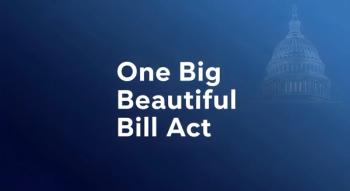
[BLOG]: The compounding challenge: A solution for all sides
Every patient’s condition and specific needs are different. Whether it’s due to an allergy, need for a special dosing, or just a lack of success with traditional options, often a personalized medication approach is the only solution that can provide effective treatment.
Ms Letwat
Every patient’s condition and specific needs are different. Whether it’s due to an allergy, need for a special dosing, or just a lack of success with traditional options, often a personalized medication approach is the only solution that can provide effective treatment.
Compounding-the practice of community pharmacists specifically tailoring prescription medication to a patient’s needs-has become an essential treatment tool in improving health outcomes. Healthcare has never been a field in which the one-size-fits-all approach is always appropriate, and compounding has been used effectively for hundreds of years to care for patients in a personalized manner, increasing efficacy and safety. In fact, a recent survey of prescribing practitioners found that the majority of respondents believed that compounded topical medications were more efficacious than their mass-produced counterparts.1 Respondents also believed that the compounds were safe to use with their patients.
Recently, however, numerous factors including more patients using these medicines, pricing changes, and questionable marketing practices from some irresponsible pharmacies in the sector have led to compounding becoming somewhat of a “dirty word” among both payers and the general public. As a result the industry finds itself at a crossroads.
“Unruly spending” leads to a freeze
Although compounded drugs currently make up only a small fraction (generally <1%) of claims submitted to pharmacy benefit managers (PBMs) and plans, concern over escalating costs and a lack of clarity about how to manage the benefit appropriately have led some payers to take drastic measures.
In early July, the pharmacy industry saw perhaps the most dramatic stance yet: Express Scripts (ESI), the major player among PBMs, announced that they would no longer cover roughly 1000 ingredients commonly used by compounding pharmacies, citing aggressively rising costs and waste as their reasoning. Although other PBMs have also made similar declarations, this mandate from ESI is the most extensive, as it will affect the company’s 90 million customers.
Even though it is totally understandable that PBMs would look at the legacy issues within the compounding industry and see an opportunity to trim costs for their clients, unfortunately the patients who require these specialized medicines are the ones who will ultimately be punished by this limitation of coverage from PBMs. Yes, the unwieldy cost increases (and other issues) among compounded drugs should be addressed. Yet leaving millions of patients without access to treatments they desperately need is not an optimal answer.
A catalyst for change
Rather than taking a unilateral approach, PBMs should look to follow a model closer to how the specialty pharmacy benefit has evolved. They should focus on narrow networks of pharmacy providers who can be trusted in terms of quality and price.
United Compounding Network (UCN) acts as a partner to PBMs and plans that are seeking to negotiate and identify fair reimbursement levels.
UCN works exclusively with nonsterile compounding pharmacies, which are regulated at the state level. Further, many of the charter members of UCN already hold dual accreditation from the Pharmacy Compounding Accreditation Board (PCAB) and the Accreditation Commission for Health Care (ACHC). Joining members will not only have to be accredited but will also be subject to on-site audits.
Ms Letwat is executive vice president,
Disclosure information: The author reports no financial disclosures as related to products discussed in this article.
Reference
1. Meredith W, Dmitry T. A brief survey on prescriber beliefs regarding compounded topical pain medications. Int J Pharm Compd. 2014;18(3):182–188.
Newsletter
Get the latest industry news, event updates, and more from Managed healthcare Executive.



















































